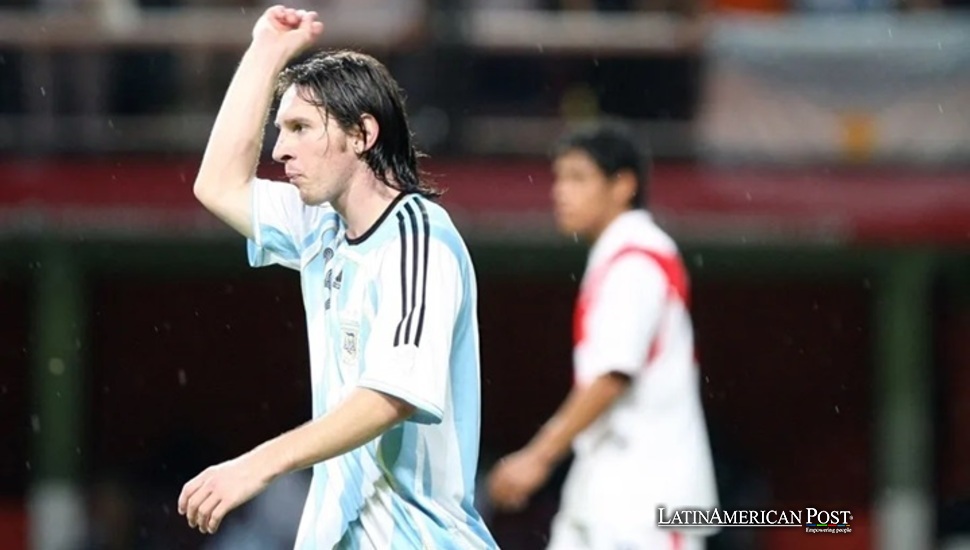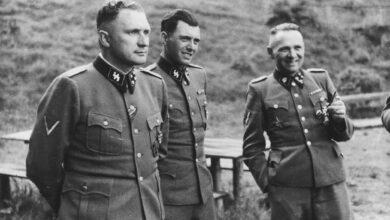South American U20 Blueprint Forging Soccer’s Bright Future

Against soccer’s grandest stages; the South American Under-20 tournament is a critical development ground for tomorrow’s superstars. From Lionel Messi to new rising talents, this high-stakes showcase has consistently forged players who eventually transform the global game.
Where Messi’s Journey Began
Precisely two decades have passed since an undersized, 17-year-old Lionel Messi stole the show at the 2005 South American Under-20 Championship in Colombia. At that time, Argentina was aware that Spain desperately wanted Messi’s commitment, so they dangled an irresistible offer: immediate inclusion in a continental youth championship wearing the Albiceleste jersey. Messi was two years younger than most competitors, but his impact was immediate and resounding.
In that 2005 U20 tournament, fans caught glimpses of other talents poised for stardom—Brazil’s Fernandinho, Colombia’s Radamel Falcao, and Uruguay’s Diego Godín among them. Messi was on a different path, joining the senior national team and playing at the 2006 World Cup before he turned 20. Looking back, it is clear that Colombia’s youth championship immensely helped launch the career of a player now seen as one of the best in soccer history.
That early experience in South America’s youth events proves this: the road to global success starts in these youth contests. In the 2020s, the South American U20 event will remain a key test area. Just as the 2005 iteration placed Messi on the fast track to global superstardom, every new edition reveals players who later grace elite European clubs, dazzle fans in the Copa Libertadores or emerge as standouts in the senior World Cup.
The most recent South American U20 tournament in Venezuela may not unearth a talent of Messi’s caliber every time. In truth, many top youth players already play at big European clubs and might not be released. With Brazil winning the trophy this year, fans still saw impressive new prospects—some raw, others nearly complete. This, combined with the knowledge that the top teams will appear at the upcoming U20 World Cup, shows the tournament’s lasting value.
A Vital Springboard for New Stars
One notable part of the recent championship is Brazil’s comeback after a 6-0 loss in their first match with Argentina to win the title. Their progress relied on strong physical play and dependable goalkeeping instead of the usual attacking style that once defined Brazilian teams. This result highlights an uncomfortable truth about youth tournaments: those who’ve physically matured often enjoy a distinct edge in short, congested events.
In terms of individual standouts, however, the South American U20 remains more about showcasing the next wave of exceptional talent than about who lifts the trophy. Among the bright lights:
Néiser Villarreal (FW, 19, Millonarios, Colombia)
A revelation for Colombia, Villarreal finished as the tournament’s top scorer with eight goals—mostly simple, direct strikes off his right foot. He’s a dynamic attacker capable of pushing the defensive line backward or dropping deep to distribute the ball. His sleek movement and willingness to link play caught observers’ attention, highlighted by a defense-splitting assist worthy of Messi himself. Given Colombia’s ongoing center-forward conundrum, Villarreal’s rise could quickly vault him into senior contention.
Felipe Longo (GK, 19, Corinthians, Brazil)
Brazil’s campaign relied on the 19-year-old keeper’s key saves in the final rounds. Although opponents posed attacks, Longo’s quick reflexes and calm kept the Selecção in title contention. Brazil has many professional goalkeepers; Longo might struggle to secure playing time at Corinthians. Yet his presence on this winning side gives him a notable boost on the path to future call-ups.
Pedro Henrique (MF, 19, Zenit St. Petersburg, Brazil)
Known by the nickname “Pedrinho,” this stocky, combative playmaker often served as Brazil’s midfield fulcrum. He worked tirelessly, shielding the ball until support arrived and providing incisive set-piece deliveries. Despite his grit and talent, Pedrinho’s path to the senior Brazil side could be complicated by the fact that he plays in Russia, where it’s easy to be overlooked by national team scouts.
Claudio Echeverri (FW, 19, Manchester City, Argentina)
Perhaps the tournament’s most electrifying performer, Echeverri drew comparisons to Messi. Nicknamed “El Diablito,” he showcased rapid dribbling, incisive short-range passes, and an endless capacity for creativity. Though fatigue impacted him late in the event, his earlier displays left fans excited. Recently secured by Manchester City from River Plate, Echeverri could become a long-term understudy to Messi in Argentina’s senior squad as the 2026 World Cup approaches.
As in all youth competitions, expecting every outstanding player to copy Messi’s rapid progress would be unwise. Yet these tournaments provide significant opportunities, allowing young players to learn the demands of top-level competition and attract scouts worldwide. More importantly, they offer a structured environment to highlight who might be fast-tracked to the senior side, an approach pioneered in South America and later adopted by other continents.
A Successful Development Model
The idea of using underage tournaments specifically to groom future national team stars has become a hallmark of South American soccer. Top footballing nations prioritize youth programs to maintain a steady pipeline of elite talent.
Argentina’s youth project became a global benchmark 30 years ago under José Pékerman. Rather than waiting for clubs to develop youngsters, he designed a national-team-based structure to train and shape players on and off the field. The results were dramatic: Argentina won the U20 World Cup five times between 1995 and 2007. Beyond the titles, the objective measure of success lay in the parade of seniors produced: Juan Roman Riquelme, Sergio Agüero, and Messi.
Uruguay similarly went through a rebirth in 2006 under Óscar Tabárez. Facing a talent drain, with the country’s best prospects departing for Europe at increasingly younger ages, Tabárez turned the U20 setup into a central pillar. Talents like Luis Suárez and Edinson Cavani graduated from the 2007 U20 cohort to become mainstays for the Celeste. A few years later, Uruguay competed fiercely on the world stage, eventually winning the 2011 Copa América and consistently earning respect at World Cups.
Other nations have taken notice. Venezuela’s run to the 2017 U20 World Cup final invigorated hopes of reaching a senior World Cup, possibly shortly. Ecuador’s 2019 U20 squad clinched the continental title before finishing third at the world level; that success directly fueled the senior team’s promising performance at Qatar 2022. The blueprint is clear: invest in youth infrastructure, track player development meticulously, and use the underage teams as a halfway house between grassroots soccer’s raw potential and international play’s complete demands.
Laying Foundations for the Future
While trophies in youth soccer can generate instant buzz, the long-term objective for any federation is to groom future senior internationals. This principle is especially relevant in South America, where players can be scattered across five continents. With leagues worldwide that feature skilled exports from Brazil, Argentina, Colombia, and beyond, national team coaches often use performances in youth events as a key guide when forming squads.
This method has changed the call-up process. Senior managers once judged players mainly by club performance in top divisions. Outstanding under-20 players get rapid entry to the senior team. The idea is simple: if they do well against foreign peers, they build a base to meet senior competition.
That’s precisely how Lionel Messi catapulted from the 2005 U20 tournament in Colombia to the 2006 World Cup in Germany. In many respects, it’s also Brazil’s path for top-tier prospects, culminating in Neymar ascending to the senior Seleção quickly after scintillating underage performances. This synergy between youth soccer and national squads continues to define the fabric of South American football.
Looking toward significant events like the 2026 World Cup, the promise of talented players such as Echeverri for Argentina or Villarreal for Colombia hints at a new generation ready to make its mark. Although it is too early to call any of them “the next Messi,” their appearance shows that the U20 competition serves as a large launch base for new stars.
When nations fully invest in youth programs—search, train, and support young footballers’ growth—they create a strong path. This cycle refreshes national teams every few years, assuring a new wave of players to replace older ones. South America, historically adept at producing world-class talent, continues to refine and replicate this model for lasting success.
Also Read: Argentinian Sebastian Baez Extends Rio Dominance with Style
Thus, while a few short weeks on the fields of Venezuela may not generate the same hype as a senior World Cup or Copa América, in many ways, the South American U20 tournament forms the wellspring of future champions. Whether a small Argentine dribbler, a tall Colombian striker, or a Brazilian goalkeeper, these players come from fierce youth competitions that build skills, raise confidence, and improve tactical sense. The conclusion is clear: from Messi’s early steps to the next wave of up-and-comers, the South American U20 blueprint remains the bedrock upon which tomorrow’s soccer dreams are built.




